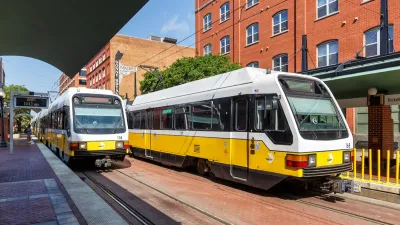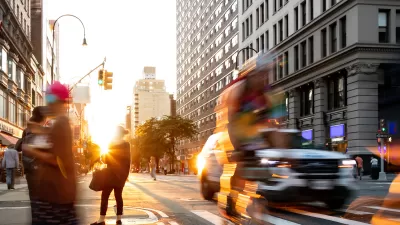While bicycle ridership has been boosted by improvements to infrastructure, what is keeping cyclists safest may simply be more of their own kind on the road.
An increasing amount of data suggests that common municipal investments in bicycle-specific infrastructure such as painted bike lanes and signage are a smaller component of rider safety than originally thought. Of growing importance is the theory that more riders means fewer crashes, because driver behavior is modified when cyclists have an increased presence on the street.
Elly Blue concludes that a steady stream of recent research backs the 'safety in numbers' theory, which was first identified in 2003 by public health researcher Peter Jacobsen. Looking at crash data from several communities, Jacobsen concluded that there is an inverse relationship between the quantity of cyclists in an area and the number of crashes involving cyclists.
Jacobsen theorizes that increased numbers of cyclists themselves cause people driving cars to become more aware, which thus leads to fewer collisions.
Blue writes:
"But when there are a lot of bicyclists on the road, according to this theory, drivers take notice. They become more attentive, slow down, pass more cautiously, double-check their blind spots, expect the unexpected. They sense that the road has become a more complicated place, and adjust their behavior accordingly. As a result, the road becomes safer, presumably for everyone."
FULL STORY: There's safety in numbers for cyclists

Study: Maui’s Plan to Convert Vacation Rentals to Long-Term Housing Could Cause Nearly $1 Billion Economic Loss
The plan would reduce visitor accommodation by 25,% resulting in 1,900 jobs lost.

Alabama: Trump Terminates Settlements for Black Communities Harmed By Raw Sewage
Trump deemed the landmark civil rights agreement “illegal DEI and environmental justice policy.”

North Texas Transit Leaders Tout Benefits of TOD for Growing Region
At a summit focused on transit-oriented development, policymakers discussed how North Texas’ expanded light rail system can serve as a tool for economic growth.

Paris Bike Boom Leads to Steep Drop in Air Pollution
The French city’s air quality has improved dramatically in the past 20 years, coinciding with a growth in cycling.

Why Housing Costs More to Build in California Than in Texas
Hard costs like labor and materials combined with ‘soft’ costs such as permitting make building in the San Francisco Bay Area almost three times as costly as in Texas cities.

San Diego County Sees a Rise in Urban Coyotes
San Diego County experiences a rise in urban coyotes, as sightings become prevalent throughout its urban neighbourhoods and surrounding areas.
Urban Design for Planners 1: Software Tools
This six-course series explores essential urban design concepts using open source software and equips planners with the tools they need to participate fully in the urban design process.
Planning for Universal Design
Learn the tools for implementing Universal Design in planning regulations.
Smith Gee Studio
Alamo Area Metropolitan Planning Organization
City of Santa Clarita
Institute for Housing and Urban Development Studies (IHS)
City of Grandview
Harvard GSD Executive Education
Toledo-Lucas County Plan Commissions
Salt Lake City
NYU Wagner Graduate School of Public Service




























